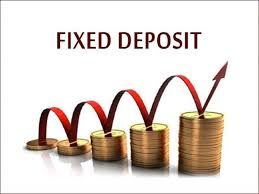Have you ever needed to withdraw funds from a fixed deposit or retirement account before the maturity date? If so, you may have faced early withdrawal penalties that ate into your returns. Early withdrawal penalties are charges levied when you take out money from certain types of accounts before a specified period. These fees can significantly impact your financial plans, so it’s crucial to understand how they work. In this article, we’ll break down the concept of early withdrawal penalties, explore how they apply to different financial products, and share tips to help you minimize their impact on your wealth.
Understanding Early Withdrawal Penalties
What Are Early Withdrawal Penalties?
Early withdrawal penalties are fees charged when you withdraw money from specific types of accounts before a predetermined date. These penalties aim to discourage account holders from breaking the terms of their financial agreements. The charges are usually a percentage of the withdrawn amount or a portion of the interest earned.
Which Accounts Typically Have Early Withdrawal Penalties?
Several financial products come with early withdrawal penalties:
-
Fixed Deposits (FDs): If you withdraw funds from an FD before the maturity date, you’ll usually pay a penalty. The penalty amount depends on factors like the FD term and the time remaining until maturity.
-
Retirement Accounts: Withdrawing from retirement accounts like the Employee Provident Fund (EPF) or the Public Provident Fund (PPF) before the specified age or lock-in period can attract penalties.
-
Tax-Saving Investments: Certain investments, such as the 5-year tax-saving FD, have a lock-in period. Withdrawing funds before this period ends leads to penalties.
Calculating Early Withdrawal Penalties
Fixed Deposit Early Withdrawal Penalties
The penalty for premature FD withdrawal is typically a percentage of the interest earned. For example, let’s say you have a 1-year FD of ₹5 lakh with Airtel Finance at an interest rates of 9.1% p.a. If you withdraw the entire amount after six months, the penalty could be 1% of the deposit amount, i.e., ₹5,000.
Here’s how the calculation works:
-
Principal Amount = ₹5,00,000
-
Interest Rate = 6.5% p.a.
-
Deposit Term = 1 year
-
Withdrawal after six months
-
Penalty = 1% of ₹5,00,000 = ₹5,000
Your effective interest rate would be lower due to the early withdrawal penalty deduction. To calculate the exact penalty for your Airtel Finance FD, use the handy FD interest calculator.
Retirement Account Early Withdrawal Penalties
Withdrawing from your EPF account before completing five years of service attracts a penalty of 10% of the withdrawn amount. If you withdraw ₹50,000 from your EPF after three years, the penalty would be:
Withdrawal Amount = ₹50,000
Penalty = 10% of ₹50,000 = ₹5,000
Similarly, withdrawing from your PPF account before completing five financial years from the account opening date leads to a 1% penalty on the withdrawn amount.
Avoiding Early Withdrawal Penalties
Plan Your Investments Wisely
The best way to avoid early withdrawal penalties is to invest in products that align with your financial goals and liquidity needs. For instance, if you have a short-term goal, opt for Airtel Finance FDs with tenures that match your timeframe.
Build an Emergency Fund
Having a dedicated emergency fund can help you tackle unexpected expenses without dipping into your long-term investments. Aim to save at least 3-6 months’ worth of living expenses in a separate savings account.
Consider Laddering Your FDs
FD laddering involves splitting your investment across multiple FDs with different maturity dates. This strategy allows you to access a portion of your funds at regular intervals without incurring penalties on the entire amount. Learn more about FD interest rates to create an effective FD ladder.
Leverage loan Against FD
If you need funds urgently, consider taking a loan against your Airtel Finance FD instead of closing it prematurely. You can borrow up to 75% of your FD amount while continuing to earn interest on the entire deposit.
Conclusion
Early withdrawal penalties can significantly impact your financial plans, but with a little knowledge and smart strategies, you can minimize their effect. By understanding how these penalties work across different financial products, you can make informed decisions about when to withdraw funds and how to structure your investments.
Remember, planning your financial journey is key to avoiding costly penalties. Consider your liquidity needs, build an emergency fund, and choose products that align with your goals. Explore the range of Airtel Finance Fixed Deposits with competitive interest rates, minimal documentation, and guaranteed returns to find options that offer attractive returns without locking in your funds for extended periods.
By taking a proactive approach to managing your investments and understanding the implications of early withdrawals, you can keep more of your hard-earned money working towards your financial dreams.
FAQs:
-
What are the penalties for early withdrawal?
Early withdrawal penalties vary based on the type of account and the time remaining until maturity. For FDs, the penalty is usually a percentage of the interest earned, while retirement accounts may charge a flat percentage of the withdrawn amount. -
How do you calculate early withdrawal penalties?
To calculate FD early withdrawal penalties, multiply the penalty percentage by the interest earned or the principal amount. For retirement accounts, multiply the withdrawn amount by the penalty percentage. Use Airtel Finance’s FD interest calculator for accurate penalty calculations. -
Can I deduct a penalty for early withdrawal?
No, early withdrawal penalty deductions are not tax-deductible. These penalties are considered a loss of income rather than a deductible expense. -
Where is the early withdrawal penalty reported?
Early withdrawal penalties are reported on Form 1099-INT for FDs and Form 1099-R for retirement account distributions. These forms are issued by the financial institution managing your account. -
Is there a 20% penalty for early withdrawal?
The 20% early withdrawal penalty typically applies to certain retirement accounts like 401(k)s if you withdraw funds before age 59½. However, penalty percentages can vary depending on the specific account type and your age at the time of withdrawal.


 Get App
Get App  Airtel Store
Airtel Store  Login
Login 


